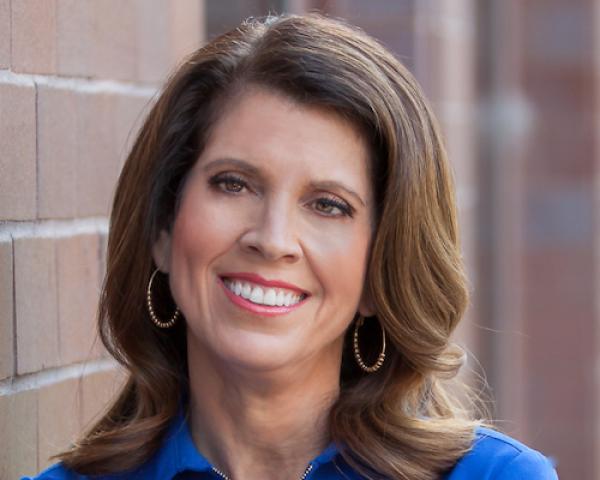In 2024, every insurance agent recognizes the need for a strong digital marketing plan that includes social selling. It’s a proven strategy that amplifies your relationship building – beating old school tactics like cold calling by a large measure. In fact, a recent survey says organizations that lead in social selling drive 45% more sales opportunities than companies whose social selling index scores rank low.
What’s less known is how to achieve social selling success. First, it’s important to realize it takes time. Though it’s possible to establish social media connections quickly, it takes a while to gain the kind of engaged relationships via such platforms as LinkedIn and Facebook that translate into loyal customers and repeat sales. That proficiency comes from practicing a regular routine of using those platforms strategically. It takes patience to grow a strong social network, to build a positive brand and to gain a broad reputation as someone who is knowledgeable and reliable and demonstrates real empathy for your clients. The following guidelines can help you establish a solid social selling practice, one day and one customer at a time.
Model each day after the aviation approach: Brief, Execute, Debrief.
The first stop to building an effective social selling strategy is to establish a solid plan. Leaders can help by guiding individuals and teams to adopt the best practices used in the aviation industry: Just as no pilot would ever climb into a cockpit without a plan, no insurance salesperson should ever approach a social selling plan without defining its goals and how to achieve them.
Once briefed, you have the clarity to execute your plan. At the end of each week, the team meets to debrief and evaluate the results. Discuss what worked and what could be handled differently. This debriefing step is particularly effective when leaders invite the team to speak freely, with no regard to rank, to get the most candid feedback on how to improve the approach.
See also: How to Use Social Media Data in Underwriting
Adopt a 3-step daily routine.
Like everything in the digital world, social media evolves quickly. It requires constant vigilance to stay ahead of the industry news, trends and your prospects’ activities. Set aside an hour each morning to focus on social selling, following the three-step approach outlined below. This consistency delivers better outcomes. It lets you dedicate time to strengthening your brand as an insurance expert by making sure your reactions to posts and subsequent comments are authentic, educational, compelling and memorable. Important tip: Always schedule this time before checking emails to ensure you’re in control of your day vs. allowing email to set your priorities.
- Refresh your knowledge. Start the day by getting up to speed with industry news. Check relevant news websites, blogs, Facebook, LinkedIn and any other social media platforms where customers may be posting. Note webinars or other training opportunities to ensure you’re staying abreast of key topics.
- Manage your LinkedIn engagement. Armed with the latest information gained from step one’s news review, you have better context to check your LinkedIn connections for important notifications. Respond with any relevant updates, share articles, provide thought leadership content and take steps to maintain your industry expertise.
This is also a good time to check your post analytics. What content is resonating with your audiences? How can you refine your strategy to strengthen responses?
- Connect with prospects and influencers by applying the Triple 10 Method.
By 10 a.m. every day, use social media to:
- Follow 10 key prospects
- React to 10 prospects’ posts
- Comment on 10 posts by your prospects
Think of steps one and two as precursors to being highly effective in step three. Consider these tips to making that critical final step most productive:
Leverage your key target list: If you haven’t already, make a list of people you view as top sales prospects. Prioritize connecting with them via social media to establish strong relationships that will deliver the greatest value.
Round out your connections: Augment your key target list with other critical connections that can help enrich your own brand. For example, include well-respected industry influencers and colleagues who are recognized leaders in the insurance industry.
Make connections engaging and personal: Avoid “spamming” your prospects. Social selling is all about sincere engagement. So make every post valuable to your audience by offering relevant insights and wise solutions to problems. Avoid overselling or self-serving efforts. Personalizing connections is another effective approach to finding common ground by identifying shared backgrounds or common interests. For example, recognize that you attended the same university or have a shared love for a sport or other personal interest.
Become a comment guru: Comments on social media drive the strongest engagement. They also require careful thought to get right. Start by selecting posts that really move you, so your comments can be more authentic and engaging.
See also: Strategic Guide to Unlocking 'Gen Zalpha'
How to polish your social selling prowess.
As with any new methodology, it takes practice to become a social selling pro. Once you have a routine established, consider these insights to perfect your approach:
Refine your prospect list. Create an ideal customer profile (ICP) to help define your key target list. Remember: You don’t have to do business with everyone. Instead, form a network that aligns with your objectives and core values. That will lead to more successful sales – and to a more satisfying career.
Apply the proper rules of engagement: Never ignore someone because they’re not ready to do business with you. Be positive, genuine, professional and personal. Educate vs. sell. Treat everyone like an individual and avoid making universal comments. Be timely with your posts and use powerful words.
Ensure your content engages and educates. You’ve heard it before: Content is king. And nowhere is that truer than when you’re using it to establish strong relationships and reinforce your expertise. Short product or explainer videos gain high visibility. In fact, a recent LinkedIn article confirmed video is the content most likely to lead to a purchase. Other examples of effective content include educational formats such as frequently asked questions (FAQs), success stories or case studies; consider interactive tools such as polls, calculators or quizzes.
Develop the relationship first. You’ll know you’re ready to move to “the ask” when exchanges with a prospect are natural, two-way conversations. When a prospect is responding regularly to your posts and aligning with your insights, it’s easy to take the relationship to the next level.
Establish a robust training culture. Leaders should set the example by being the first to become social selling experts. Then take steps to encourage interest among the broader sales team. Create contests. Build expectations in individual performance goals. Most important: Encourage individuals to become responsible for boosting their own social selling skills and defining their own success.
Social selling is a quickly evolving strategy that every insurance salesperson must adopt to stay competitive. By following this method, insurance sales teams will be more accomplished at making social selling part of their regular routine.






